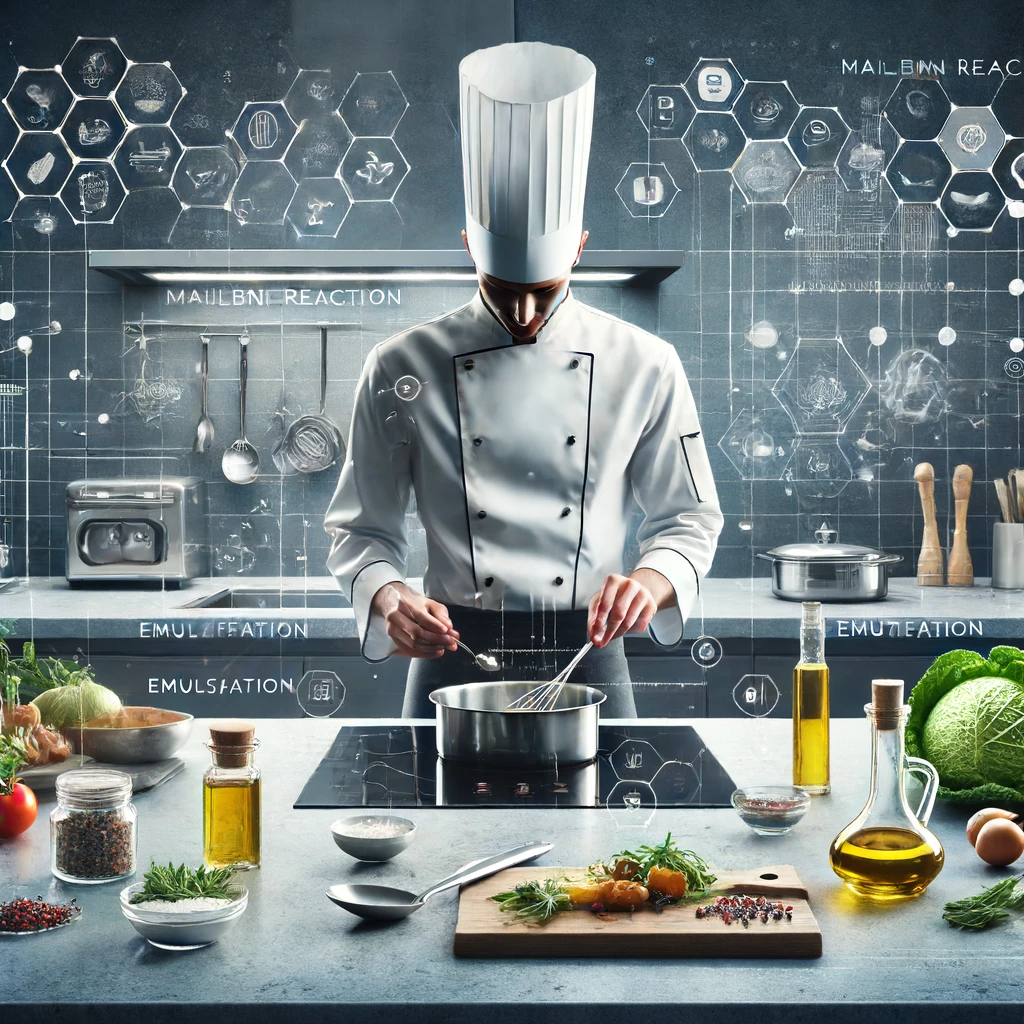Introduction
Cooking is both an art and a science. Understanding the scientific principles behind cooking can help you become a more confident and skilled home cook. This knowledge allows you to make informed decisions in the kitchen, leading to better results and more enjoyable meals.
The Maillard Reaction
- What is the Maillard Reaction?
- The Maillard Reaction is a chemical reaction between amino acids and reducing sugars that gives browned foods their distinctive flavor. It occurs when food is cooked at high temperatures, creating complex flavors and aromas.
- How to Achieve It:
- Heat: Use high heat to promote browning.
- Dry Surface: Pat foods dry before cooking to ensure proper browning.
- Fat: Use a small amount of oil or butter to enhance the reaction.
Emulsification
- What is Emulsification?
- Emulsification is the process of combining two immiscible liquids, such as oil and water, to create a stable mixture. This technique is essential for making sauces, dressings, and mayonnaise.
- How to Achieve It:
- Slow Addition: Add the oil slowly to the water-based ingredients while whisking vigorously.
- Stabilizers: Use stabilizers like mustard or egg yolks to help form a stable emulsion.
Gelatinization
- What is Gelatinization?
- Gelatinization is the process where starch granules absorb water and swell upon heating, thickening the mixture. This is crucial for making sauces, gravies, and baked goods.
- How to Achieve It:
- Heat: Gradually heat the mixture to the proper temperature to activate the starch.
- Stirring: Constantly stir the mixture to prevent lumps and ensure even thickening.
Protein Denaturation
- What is Protein Denaturation?
- Protein denaturation is the process where proteins lose their native structure due to heat, acid, or mechanical action. This change in structure is essential for cooking meat, eggs, and other protein-rich foods.
- How to Achieve It:
- Heat: Apply gentle, consistent heat to avoid overcooking.
- Acid: Use acidic ingredients like lemon juice or vinegar to help denature proteins in marinades.
- Mechanical Action: Whisk or beat eggs to denature proteins and incorporate air for light, fluffy textures.
Fermentation
- What is Fermentation?
- Fermentation is a metabolic process where microorganisms like yeast and bacteria convert sugars into gases, acids, or alcohol. This process is used in making bread, yogurt, sauerkraut, and other fermented foods.
- How to Achieve It:
- Controlled Environment: Maintain the proper temperature and humidity for the specific fermentation process.
- Time: Allow sufficient time for fermentation to develop flavors and textures.
Conclusion
Understanding the science behind cooking techniques can elevate your culinary skills and lead to more successful and enjoyable cooking experiences. By mastering these fundamental principles, you’ll be able to approach recipes with confidence and creativity, transforming your everyday meals into extraordinary dishes.
Call to Action
Love learning about the science of cooking? Visit CookingBot.com for more in-depth articles, tips, and recipes that will enhance your culinary knowledge and skills. Join our community alongside ChefBot and RecipeBot to discover new culinary inspirations and become a master in your kitchen.

